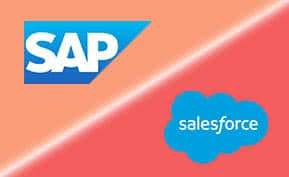Using CRM to Improve Lead Tracking and Management

Businesses of all types and sizes spend a small fortune generating sales leads.
But, according to a recent study by the Business Performance Management Forum, more than 70% of today’s companies have no formal process for qualifying those leads, and as a result, as many as 80% of them are mishandled or ignored.
A CRM system can help companies convert and close more leads by dramatically improving the way they are processed and managed.
The Lead Lifecycle
Before a customer purchases a product or service from a business, they will pass through a series of stages, known as the lead lifecycle. The phases of the lead lifecycle include:
Suspect
A suspect is a contact who has not yet expressed an interest in a company’s offerings, but would likely have a want or a need for a similar product or service. Suspects can be identified by determining the characteristics of those people who are most likely to buy from a company, or the traits of those people the company most wants to sell to.
CRM systems can simplify and enhance suspect profiling by allowing companies to more accurately uncover trends, patterns, and commonalities among the customer base. Once a suspect profile has been created, CRM can make it easier to target contacts for specific promotions by allowing for more accurate segmentation based on age, income level, job function, industry, geography, or other characteristics.
Lead
As marketing begins to deploy campaigns to suspects to increase awareness and create demand, interested parties will respond or request more information by calling a 1-800 number, clicking-through to a Web site landing page, sending back a self mailer, or attending an event. These contacts can then be classified as leads – suspects who fit a specific profile, and have demonstrated an interest in or need for a company’s products or services.
CRM systems enable easy logging and tracking of campaign responses, so those suspects that have become leads can be flagged accordingly. Sales and marketing staff can then take the needed steps – continued marketing outreach, direct follow-up, etc. – to move them further through the lead lifecycle.
Prospect
As communication with leads continues, and they become more educated about the company and its offerings, some of them will wish to see a live demonstration, gather pricing information, or engage in other in-depth discussions. These contacts are
now seriously considering making a purchase, and have become active sales opportunities or prospects.
A CRM system enables marketing to “pass” or “assign” a lead directly to a sales rep at this stage. It will also help that sales rep efficiently manage all aspects of the prospect deal as it moves closer to closing. For example, activities such as phone calls and meetings can be tracked, related documentation such as quotes and RFPs can be stored, and probability of close and potential deal value can be estimated for pipeline and forecasting purposes.
Client
The deal has been closed, and the prospect, who was once just a suspect, has finally made a purchase. CRM tools can help companies track initial and add-on purchases, as well as any post-sale service and support issues that may arise. Additionally, as customers become increasingly fickle and loyalty continues to plummet, CRM solutions can provide companies with the insight they need to provide world-class support, deliver value-added services, successfully up-sell and cross-sell, and maintain existing business.
Key CRM Lead Management Features
Many CRM solutions on the market today, particularly those with strong sales force automation or marketing automation capabilities, provide a wide range of features to support enhanced lead management. These functions include:
* List imports. Lead databases are often built from a variety of different sources – purchased lists, external contact databases, and other offline resources. CRM solutions eliminate manual entry by enabling fast, accurate importing of external files, while preventing the creation of duplicate records.
* Lead capture. Many CRM applications can be tightly integrated with Web sites and email distribution systems. So, form completions, click-throughs, surveys, and other response mechanisms can be dynamically captured, and related information can be made instantly available to sales and marketing staff.
* Database segmentation. CRM systems allow sales and marketing staff to profile contacts by specific characteristics or traits. This allows for more targeted and personalized communication, which can improve sales and marketing effectiveness and accelerate sales cycles.
* Activity and status tracking. With a CRM solution, companies can track more than just contact data. They can monitor and report on interactions at every single touch point. Vital information about campaigns received and responded to, sales activities, behaviors, and more is captured and stored by the CRM system. Contacts, and their status, can also be closely tracked as they move through various stages of the lead and sales cycle.
* Rules-based routing. Some CRM solutions contain intelligent routing capabilities, so follow-up communications can be automatically triggered, or leads can be dynamically pushed to specific sales representatives, based on pre-defined business rules.
Where to Look
So, which CRM solutions have the best lead tracking and management capabilities? The ones with sales force automation or marketing automation as their foundation are likely to offer the most comprehensive features in this area.
Some of the vendors who offer the strongest lead management functionality include:
* Salesforce.com. The Salesforce.com Marketing module provides robust capabilities that simplify lead capture, automate lead conversion, and optimize lead flow from qualification through close.
* SAP. SAP’s Marketing component offers a broad range of lead tracking features, including segment and list management, dynamic lead prioritization, and automatic lead distribution.
* Oracle. When Oracle acquired Siebel, they also acquired some powerful lead management functionality. The Siebel CRM product offers dynamic lead assignment and routing, and can even automatically re-assign leads as needed (for example, if a sales rep leaves the company). Comprehensive activity and history tracking, and list import and management are also included.
* NetSuite. NetSuite’s popular marketing automation solution provides a wide variety of lead management capabilities such as import with duplication detection, dynamic capture of Web leads, and fully customizable qualification and scoring procedures to aid in lead prioritization.
* Maximizer. Fully automated processes for campaign response management, Web lead tracking, contact importing, and distribution, and dynamic alerts that notify key stakeholders when leads aren’t assigned or followed up in a timely fashion – as well as a unique capability that scans the subject line and body copy of emails for select keywords and instantly forwards them to the appropriate person – make Maximizer one of the best lead management environments on the market today.
[Photo courtesy of osha.]





